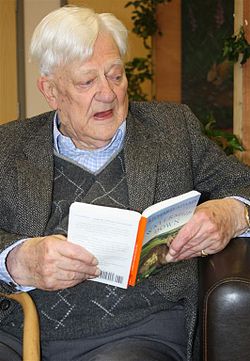
YOUR MIND WHILE LISTENING TO A BOOK
I have always loved reading books aloud. When I was a teen I spent an awful lot of time on the phone. Actually talking . . . it was a landline phone. And it was in my room. With unlimited local calling for $17 a month. I held down a few babysitting jobs so I could afford that phone and one of the magical things I did on it was read books, aloud, to my friends.
I know right? I have great friends. They would humor me as I did different voices for all the characters. I remember reading Stephen King’s Night Shift to one friend in particular, story by creepy story, until one night my friend casually asked, “How about you read something that won’t prevent me from sleeping after we hang up?”
Reading aloud continued through my adult years except my new captive audience was my kids. From Sandra Boynton to EB White, I was the one who had a hard time stopping so the kids could finally go to bed. My oldest, bless his heart, let me read the entire Harry Potter series to him, even though the last book was published the year he turned eleven and he was fully capable of reading it on his own. BTW, I do a horrifying Voldemort and a kick-butt Hermione.
Now I have a new reason for reading aloud beyond the entertainment factor: EDITING my own WRITING. There is nothing so powerful as stumbling over your own words to make you realize more polishing is required. Reading aloud forces my mind to slow down and see each and every word. When I read silently, I miss typos, grammar errors, and missing words becuase my mind will fill in the gaps– it just hums along without recognizing I just had my protagonist pee around the corner instead of peek around the corner.
Even better, is listening to someone else read your words to you. My very first novel, the one that garnered me two offers of representation and an agent, was read to me by my son. He would stop and tell me when he didn’t understand something so I could put it into simpler language. I would stop him when I heard a sentence fail and fix it before he went on. It was a great partnership, but alas, he is eighteen now and has a life.
However, I have discovered how to let my computer read my words to me. Granted, my lovely Macbook can’t put the emotional nuance into the words that a human being can, but hearing someone else’s voice (Okay, someTHING else’s voice) read my work back to me continues to be eye opening. And I have become very fond of “ALEX”, especially when he reads one notch above Normal speed.
This is how you do it on a Mac:
- Open the system preferences
- In the System grouping, open SPEECH
- Click on the Text to Speech tab
- Choose your system voice with the drop down arrow, male or female (I prefer Alex or Kathy depending on if I have a male or female POV)
- Choose the voice speaking rate
- Test your choices with the Play button and alter as needed
- Click the check box for “Speak selected text when the key is pressed”
- Click the set key button to set up a keyboard command, I use Command + H which means to get Alex talking I press the Command key and the H key on my keyboard at the same time, but you can choose any combination of keys that makes sense for you that isn’t already in use, you know like CTRL + P which sends your work to the printer…
- Click the OK button
- X out of the System Preferences window and you’re good to go
Now when you have your book open in Word or Scrivener or whatever program you use, you’ll need to highlight the text to be read (click your mouse button at the top of the passage, hold the mouse button down, drag through the selection, release the mouse button) and then press Command + H.
Oh, make sure your speaker is turned on too!
What are the directions for doing this on a Windows-based computer? Why would you want to write a novel on anything but a Mac? 🙂
Photograph © Ruslana Stovner
 We all know every writer started as a reader. Recently a writer friend of mine shared that the book she read in middle school that kicked off her interest in writing for children was E.B. White’s Charlotte’s Web. I agree that book is a serious favorite of mine too. I named my first two-wheel bike Charlotte after all. But for me, if I have to narrow down from all the books I read as a kid, (everything from To Kill A Mockingbird to Salem’s Lot) the one book that inspired me the most was Watership Down by Richard Adams.
We all know every writer started as a reader. Recently a writer friend of mine shared that the book she read in middle school that kicked off her interest in writing for children was E.B. White’s Charlotte’s Web. I agree that book is a serious favorite of mine too. I named my first two-wheel bike Charlotte after all. But for me, if I have to narrow down from all the books I read as a kid, (everything from To Kill A Mockingbird to Salem’s Lot) the one book that inspired me the most was Watership Down by Richard Adams.



